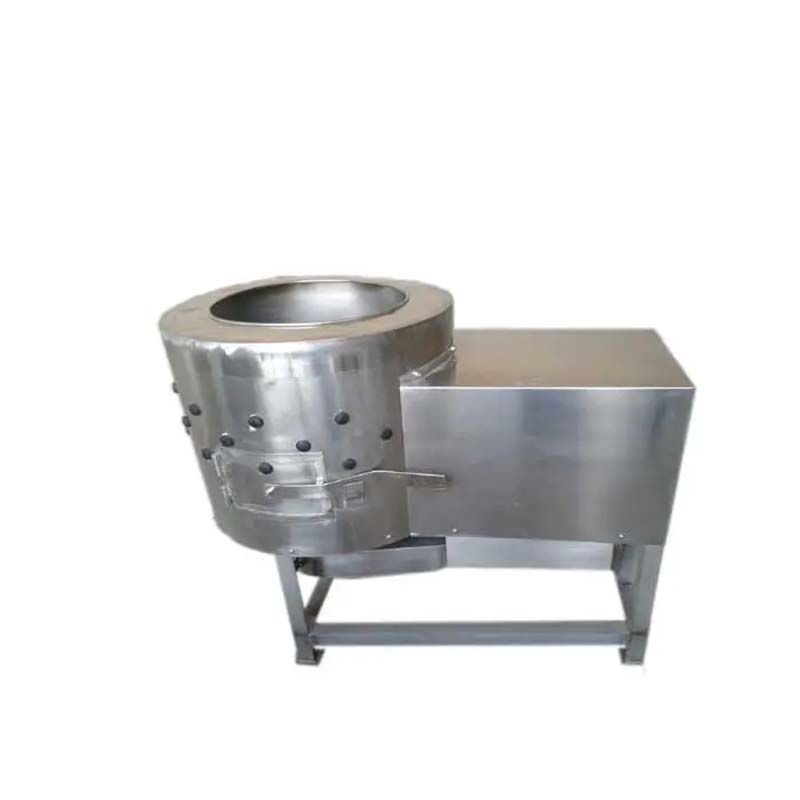Feather Removal Machine for Efficient Poultry Processing
Nov . 11, 2024 04:12 Back to list
Feather Removal Machine for Efficient Poultry Processing
The Art and Science of Fowl Plucking
Fowl plucking is a crucial yet often overlooked aspect of poultry processing that plays an integral role in bringing chicken, ducks, and other birds to our dinner tables. While it may seem straightforward, there is a considerable amount of technique and skill involved in this age-old practice. Understanding the process not only sheds light on how our food is prepared but also highlights the significance of respecting the animals and the traditions surrounding food production.
The Art and Science of Fowl Plucking
Fowl plucking can be done by hand or by using machines designed for this purpose. Hand plucking, often preferred for smaller-scale operations or in traditional settings, requires a deft touch and a keen understanding of the feathers' structure. The process typically begins after the bird has been humanely killed. It is essential to scald the bird in hot water, usually around 140°F (60°C), to loosen the feathers and make them easier to remove. This step is crucial as it prevents damage to the skin and the meat, ensuring a higher quality product.
fowl plucker

Once scalded, the plucking can commence. The experienced plucker knows to begin with the larger feathers, as these tend to come out more easily. Removing the smaller down feathers and pin feathers is the final step, and it requires careful attention to detail. The use of a knife or finger tools can aid in this process, helping to ensure that no feathers are left behind. Mastering this technique takes practice; amateur efforts can lead to torn skin or residual feathers, which can detract from the presentation of the bird.
In contrast, commercial poultry operations often utilize mechanical pluckers. These machines mimic the action of hand plucking but are designed to handle large quantities of birds quickly and efficiently. While this method offers significant advantages in terms of speed and labor costs, it can sometimes lead to a lower quality product if the machines are not well-maintained or calibrated. Therefore, a balance must be struck between speed and quality, ensuring that the birds are treated humanely throughout the process.
Beyond the technical aspects of fowl plucking, there is an ethical dimension that modern consumers are increasingly aware of. With the rise of sustainable and ethically sourced food, many people are looking for ways to honor the animals that provide us with sustenance. This has led to a resurgence of interest in local, small-scale poultry farming, where individuals can gain a deeper appreciation for the entire process from farm to table.
In conclusion, fowl plucking is more than just a means to prepare poultry for consumption. It encompasses a rich history, intricate techniques, and ethical considerations that draw a direct link between food and the respect we give to the animals that provide it. As we continue to examine our food sources and their impact on the environment and society, understanding practices like fowl plucking can enhance our appreciation for the journey that our meals take before reaching our plates. Whether through traditional hand plucking or modern machinery, the art and science of fowl plucking remind us of the interconnectedness of life, food, and community.
-
Automatic Feeding Line System-Pan Feeder Nipple Drinker|Anping County Yize Metal Products Co., Ltd.
NewsJul.29,2025
-
Hot Sale 24 & 18 Door Rabbit Cages - Premium Breeding Solutions
NewsJul.25,2025
-
Automatic Feeding Line System Pan Feeder Nipple Drinker - Anping County Yize Metal Products Co., Ltd.
NewsJul.21,2025
-
Automatic Feeding Line System Pan Feeder Nipple Drinker - Anping County Yize Metal Products Co., Ltd.
NewsJul.21,2025
-
Automatic Feeding Line System - Anping Yize | Precision & Nipple
NewsJul.21,2025
-
Automatic Feeding Line System - Anping Yize | Precision & Nipple
NewsJul.21,2025






